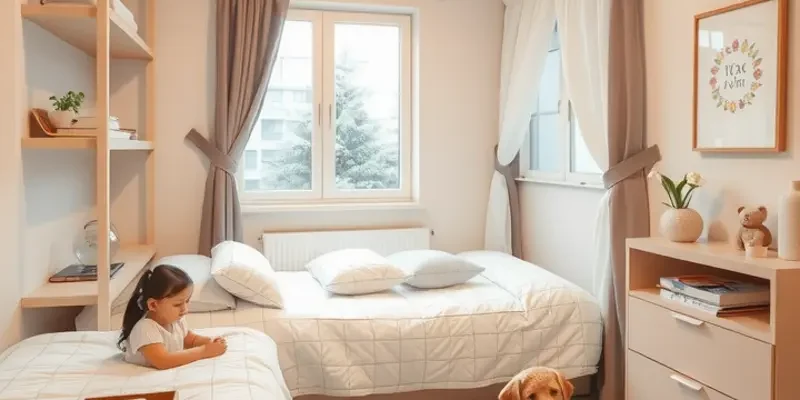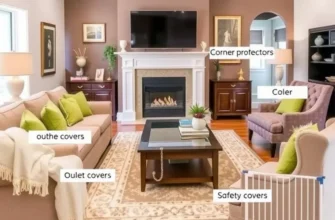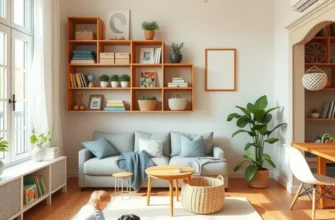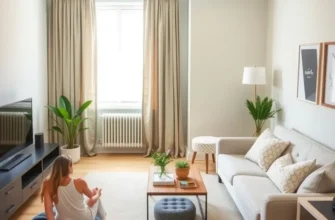Finding the perfect apartment is only the beginning of your family’s journey towards restful nights and peaceful days. Whether you have toddlers in need of a cozy sleep space, pets that might disrupt nighttime routines, or simply limited room in an apartment, navigating sleep solutions can feel overwhelming. How do you create a safe, comfortable, and child- or pet-friendly sleep environment? The good news is that with thoughtful planning and creativity, it’s absolutely achievable! This guide aims to provide you with practical tips and child sleep solutions tailored for various lifestyles. You’ll learn how to optimize your living space for sleep comfort, choose the right bedding and furnishings, and establish a consistent sleep routine that caters to every family member—furry or not. Together, let’s explore ways to nurture calm, cozy, and restful nights that suit your unique living situation.
Designing a Cozy Sleep Space in Compact Apartments
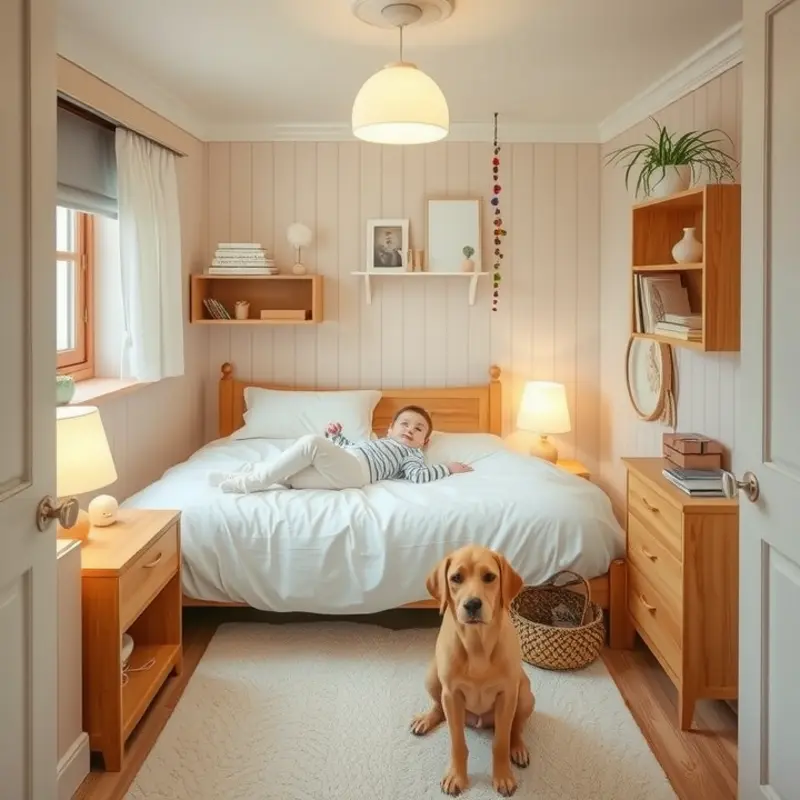
Creating a tranquil sleep environment in small apartments can indeed be challenging. However, with thoughtful design approaches, you can craft a serene retreat that maximizes both comfort and space. Families, pet owners, and couples alike can benefit from these strategies to enhance their sleeping quarters.
First, consider the arrangement of the bed. For families, positioning the bed against the longest wall in the room can create extra space for children’s sleeping areas or even a crib if needed. Pet owners might consider a nook or corner where a pet bed can seamlessly fit, ensuring it doesn’t obstruct movement but still integrates with the bedroom layout. Couples should focus on balanced access to each side of the bed, allowing ease of movement and personal comfort.
Color choice plays a vital role in setting a calming tone. Opt for neutral palettes with soft hues like gentle blues, muted greens, or warm greys. These colors promote relaxation and create an airy feel, which is perfect for smaller spaces. Incorporating these tones in your bedding, curtains, and even wall art can transform the ambience of the room.
To make the most of compact areas, space-saving furniture is essential. Consider beds with built-in storage drawers underneath or headboards with integrated shelves. These options free up valuable floor space while providing practical storage solutions. For families, bunk beds can be a clever way to accommodate children without sacrificing room space. Pet owners can look into dual-purpose furniture, such as ottomans that double as pet hideaways, offering optimal space usage.
Sound is another key component of a serene sleep environment. Thick curtains or blackout blinds not only block out light but can also help minimize external noise. Utilizing a white noise machine or a fan can drown out disruptive sounds, benefiting light sleepers and babies alike.
Plants can add a touch of nature and enhance indoor air quality. Opt for low-maintenance varieties like snake plants or peace lilies, which thrive in apartment settings and require minimal light and attention. Position plants on window sills or elevated shelves to maintain floor space.
Utilizing vertical space is another design trick, particularly in small apartments. Install shelves or hooks on walls for items like reading lamps or decorative pieces. These not only save space but also add a personal touch to the room without cluttering surfaces.
For those with pets, maintaining a tidy sleeping area is crucial. Regularly cleaning pet bedding and vacuuming the surface area can reduce allergens and create a more pleasant environment for sleep.
Finally, consider integrating smart technology where possible. Smart bulbs with adjustable light settings can simulate natural light cycles, helping regulate sleep patterns. Such devices can be especially useful for families with children who benefit from consistent bedtime routines.
For more ideas on apartment-friendly living, you might find these apartment pet etiquette tips useful in curating harmonious pet-inclusive spaces. Implementing these design ideas can profoundly improve the quality of your sleep, making compact spaces feel as expansive and calm as any larger environment.
Establishing Bedtime Routines for All Family Members

An effective bedtime routine is the cornerstone of good sleep habits in dynamic households. A well-structured routine not only calms your children and pets but also signals to them that it’s time to relax and prepare for sleep.
For children, consistency in bedtime routines is vital. Start by setting a fixed bedtime that allows for adequate sleep based on age. About an hour before this time, dim the lights and reduce noise levels, creating a calming environment. Encourage relaxing activities like reading a story or a quiet talk about the day’s events. These activities can transition them smoothly from the day’s bustle to a restful night.
Incorporate sleep cues that reinforce these actions. A warm bath can be soothing and acts as a natural signal for winding down. Pajama time, brushing of teeth, and bedtime stories should happen in the same order each night. This repetition enhances their understanding that it’s time to sleep once these activities begin.
Pets, just like children, thrive on routine. Dogs may need a quick walk to release pent-up energy and have a toiletry break before settling down. Cats, on the other hand, might enjoy a short play session, simulating their natural hunting instincts. Establish a designated sleeping area for your pets, which is warm and comfortable, free from disturbances that could interrupt their sleep.
For both children and pets, screen time should be limited before bed. The light emitted by screens can interfere with the natural production of melatonin, a hormone that promotes sleep. Nature sounds or white noise machines can be helpful substitutes if background noise is needed for sleeping.
Balancing individual needs is crucial when designing these rituals. Observe each family member’s responses and adjust your approach accordingly. If your child seems more agitated after a bath, perhaps a bedtime story should come first. Similarly, a dog requiring less stimulation might benefit more from quiet time rather than a vigorous walk.
In multi-family or high-density apartment living, external noise can sometimes be an issue. Consider using noise-dampening techniques such as rugs or curtains that absorb sound to keep your home tranquil (learn more about soundproofing methods here).
Ensuring restful nights for everyone involves maintaining this consistency, while also remaining flexible and attentive to changing needs or circumstances. By doing so, each member of your household, children and furry companions alike, will learn to associate these routines with relaxation and sleep, encouraging a more peaceful apartment living environment.
Final words
Creating a peaceful sleep environment within an apartment doesn’t have to be a daunting task. With thoughtful design choices and established routines, families, couples, and pet owners can ensure their homes provide comfort and safety for everyone. Remember that consistency is key, and by incorporating these child sleep solutions, you are fostering a nurturing atmosphere that encourages restful sleep and joyful mornings. Embrace the tips shared, and watch as your little ones, along with your pets, eagerly drift off to dreamland, establishing the foundation for happier days ahead.

